Simply put, weeds are plants that grow in places where you do not want them to grow. Even the most maintained and heavily cared lawns are not safe from weeds. Lawn weed identification works to inspect primary characteristics of the plant.
Weeds come in many forms, shapes and sizes. They grow aggressively and often produce a large number of seeds and spores, further assisting their spread. Read our lawn weed identification guide below.
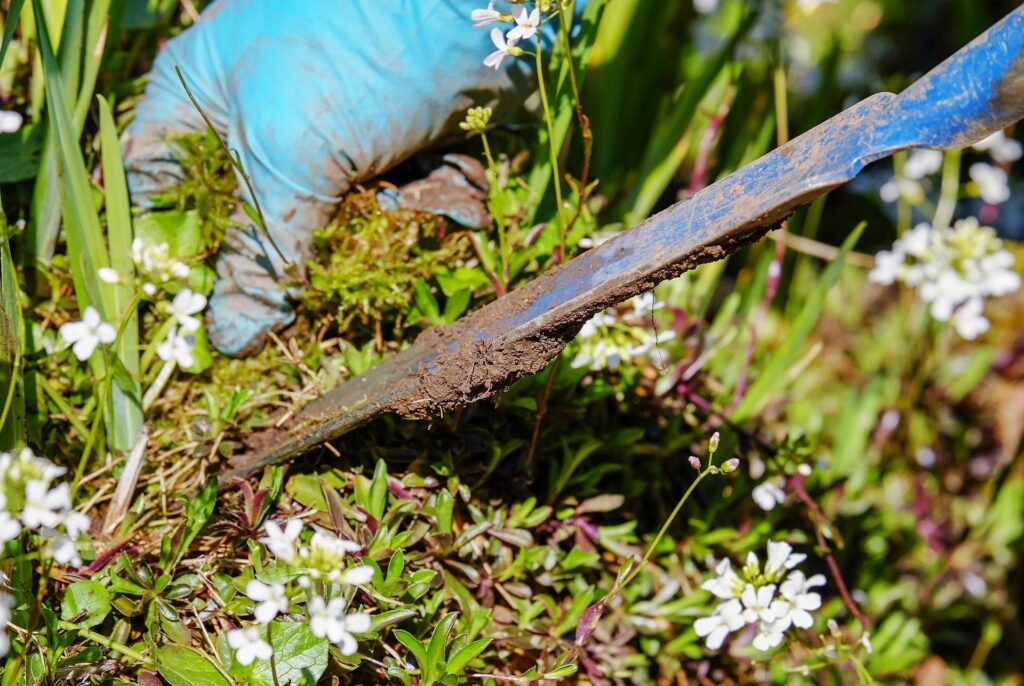
Eliminating weeds requires proper knowledge of the weed you are dealing with and how it spreads.
Where some weeds only ruin the aesthetics of your lawn, others can compete aggressively with plants and grass in your yard.
As a result, the grass in your yard has less space, water, nutrients and other essential resources available for healthy growth.
That is why experts suggest always keeping an eye out for weeds on your lawn. However, sometimes people do not even realize that they have weeds growing on their lawn until it is too late. It is because they do not know what weeds look like.
Moreover, even though weed control is not rocket science, you still need to understand the weed you are dealing with, how it grows, and the best way to control its spread. Only then will you be able to eliminate a weed from your lawn.
So, let’s go ahead and learn about some common lawn weeds, what they look like and what you can do to eliminate weeds from your lawn efficiently.
Types Of Weeds
Before we start talking about common lawn weeds, it is crucial to know how weeds are classified and on what basis. It will help you understand weeds better and equip you better at dealing with and getting rid of common lawn weeds.
Annual Weeds
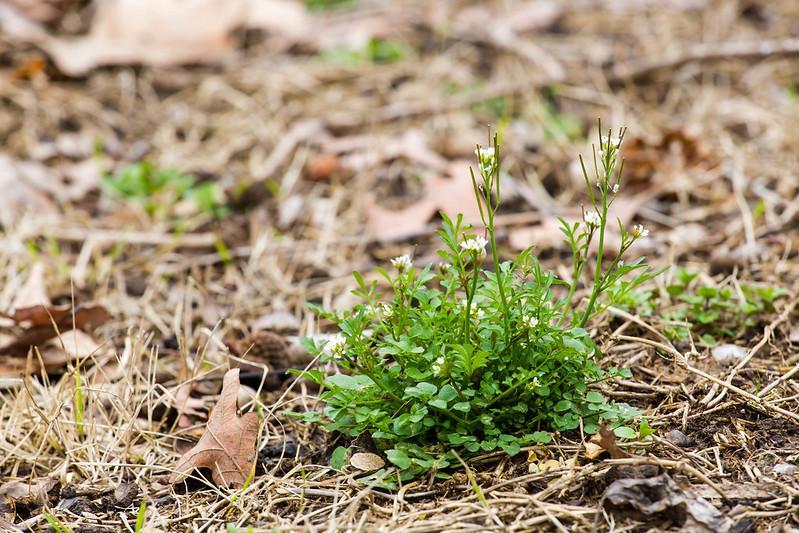
Hairy bittercress: one of the first broadleaf weeds that appear during early spring.
Annual weeds are plants that complete their life cycle within one year. In other words, annual weeds sprout, grow, flower and set seeds in a single year. However, it is essential to note that some weeds can do this within a few weeks.
It means that annual weeds can sometimes have multiple generations in a single year. Common examples of annual weeds include crabgrass, goosegrass, chickweed, knotweed, pigweed, nettle and hairy bittercress.
Biennial Weeds
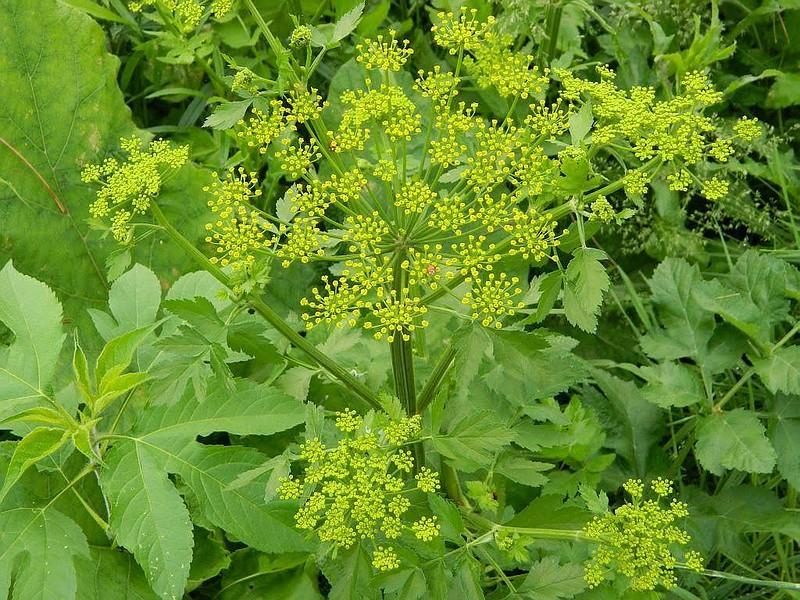
Wild parsnip: A toxic weed that can be found alongside roadways in summer.
Biennial weeds are plant pests that complete their life cycle in two years. Biennial weeds grow during the first year; however, they remain in a vegetative state and rarely set seeds. Whereas, in the second year, a biennial weed will flower, set seed and then die.
Some sources also use the word two seasons instead of two years. Common biennial weeds include bull thistle, garlic mustard, blueweed, wild parsnip, small flower buttercup and yellow salsify.
Perennial Weeds
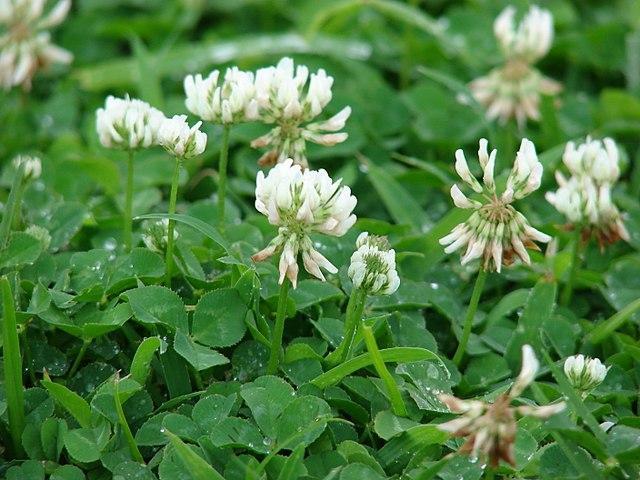
Wild clover: A perennial and perhaps the most common weeds of turf areas.
Perennial weeds are plants that appear regeneratively time and again, year after year, a seemingly infinite number of times. Perennial weeds live more than two years, and they are very hard to get rid of.
Examples of common perennial weeds include nutsedge, field bindweed, dandelion, oxalis, white clover, creeping charlie and Canada thistle.
In addition to being classified based on their life cycles, weeds are generally put into two groups based on their morphology. These groups are:
Grassy Weeds
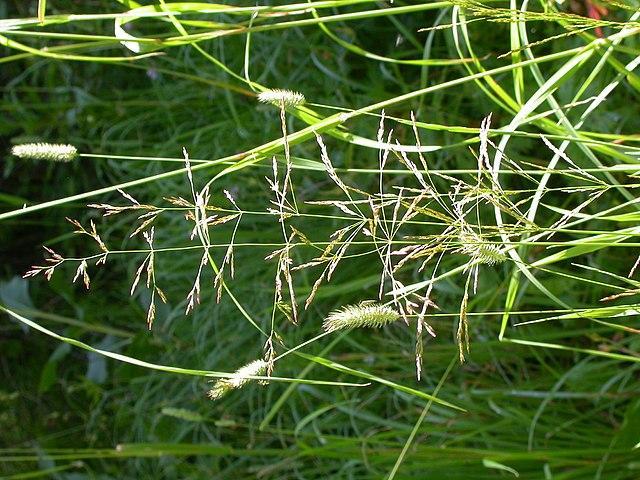
Creeping bentgrass: A low-growing, fine-bladed perennial grassy weed.
As the name implies, grassy weeds look like grass. Unfortunately, these weeds are hard to identify. Most people do not even notice their presence until it is too late. Common examples of grass weeds are crabgrass, creeping bentgrass, and sedges.
Broadleaf Weeds
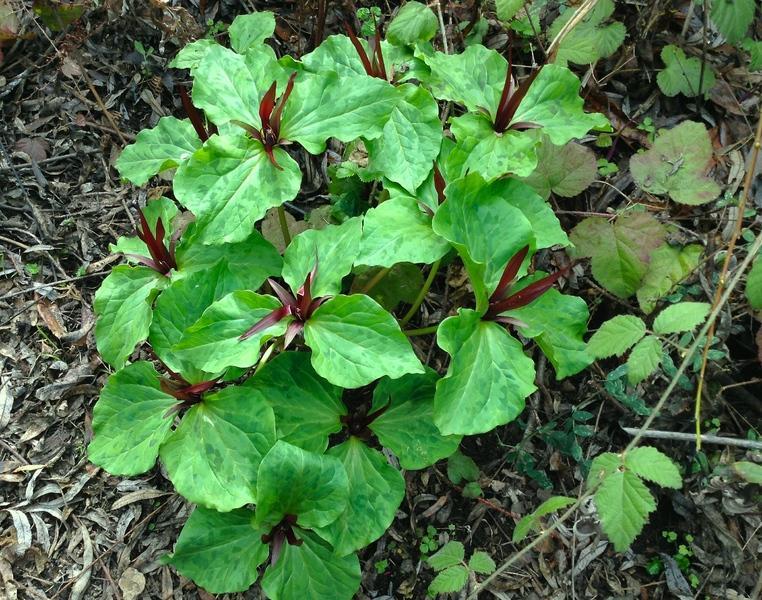
Ground ivy: An evergreen broadleaf weed that spreads aggressively via runners on the ground.
Broadleaf weeds are usually easy to locate and identify as they stick out in the grass. Most broadleaf weeds have leaves with netlike veins. Common examples of broadleaf weeds include chickweed, clover, thistle and ground ivy.
In addition to their life cycle and morphology, weeds are also put into different groups based on their ecological effects. These groups are:
Noxious Weeds
As the name suggests, noxious weeds are those plant pests that are considered to be harmful to humans, animals and the environment. Sometimes these weeds are also subject to regulations by an agricultural or government authority to control their spread.
Invasive Weeds
Invasive weeds are non-native plant species that have a tendency to grow uncontrollably due to a lack of natural competitors. Just like a noxious weed, an invasive weed can also cause severe damage to environmental health.
Noxious and invasive weeds vary from place to place. To check out the list of weeds declared noxious/invasive in your state, check out the USDA database here.
Common Lawn Weeds
Now that you understand how weeds are classified based on their life cycle, morphology and environmental effects, let’s move on towards learning about some of the most common lawn and garden weeds.
We will provide you with a detailed overview of the weed, along with an identification guide and top control methods. So, let’s dive right in:
Common Dandelion
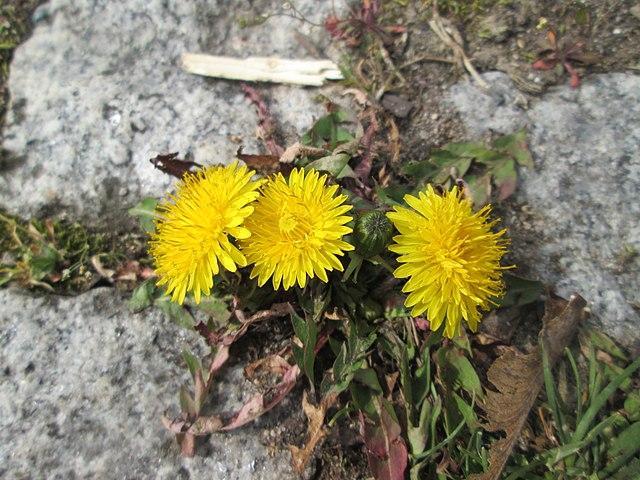
Common dandelion germinates and flowers year-round but mainly in fall and spring.
Dandelion is a common weed of lawns, gardens, ornamental beds, nurseries and other turf areas. Dandelions have a deep taproot, which makes removing established plants rather tricky. They spread by seeds that can be produced even without pollination.
You can simply pull out dandelions to control their spread at the start of an infestation. However, make sure that you remove the entire root, or the weed will grow back. In later stages of infestation, use a broadleaf herbicide to kill the dandelions on your lawn.
Common Dandelion Quick Facts & Identification
| Scientific Name | Taraxacum officinale |
| Other Names | Clock, Blowball |
| Weed Type | Broadleaf Perennial |
| Height | 5 to 45 cm |
| Identification | Leaves – Leaves are lance-shapes and irregularly lobed – Leaves grow in a rosetteLeaves are often purple at the base Flowers – Flowers are borne in heads that form round balls – Flowers are deep golden yellow – Flower stalks emit a milky white sap when broken |
Canada Thistle

Canada thistle was the first weed declared noxious in the United States.
Like common dandelion, canada thistle also produces a robust root system that continuously gives rise to new shoots. This allows the need to invade new areas, and it often outcompetes other vegetation in the area.
You can control the spread of Canada thistle by mowing the grass before the weed has set seeds. The application of foliar herbicides is also helpful during fall and spring. However, you will need to monitor the lawn for several seasons post initial treatment.
Canada Thistle Quick Facts & Identification
| Scientific Name | Cirsium arvense (L.) Scop. |
| Other Names | Creeping thistle, Field thistle, Californian thistle |
| Weed Type | Broadleaf Perennial |
| Height | 2 to 5 feet |
| Identification | Leaves – Leaves have toothed margins and sharp spines – Leaves are alternate and lance-shaped – Leaves are shiny and have a deep green color Flowers – Flowers are born in clusters – Flowers are pink, purple and occasionally white – Canada thistle flowers from June to late autumn |
Creeping Buttercup

Creeping buttercup has low seed production and mainly spreads by above-ground runners.
Creeping buttercup is known for its bright yellow flowers that attract many pollinating insects. However, do not be fooled by its looks! Creeping buttercup is a common weed of lawns, gardens and bare soil areas where it can form dense mats.
If you have a creeping buttercup infestation, at first, try suppressing the weeds with mulch or by digging up the individual plants. However, if these methods are not feasible, you can use herbicides containing MCPA (many trade names) or Aminopyralid.
Creeping Buttercup Quick Facts & Identification
| Scientific Name | Ranunculus repens |
| Other Names | Creeping crowfoot, Sitfast |
| Weed Type | Broadleaf Perennial |
| Height | 50 cm (20 in) |
| Identification | Leaves – Leaves are triangular with three deeply cut lobes – Leaves are borne on long hairy stems – Leaves are usually dark green, sometimes with pale flecks Flowers – Creeping buttercup flowers mainly between May and August – Flowers are bright yellow and glossy – Flowers have five and occasionally, ten petals |
Bindweed
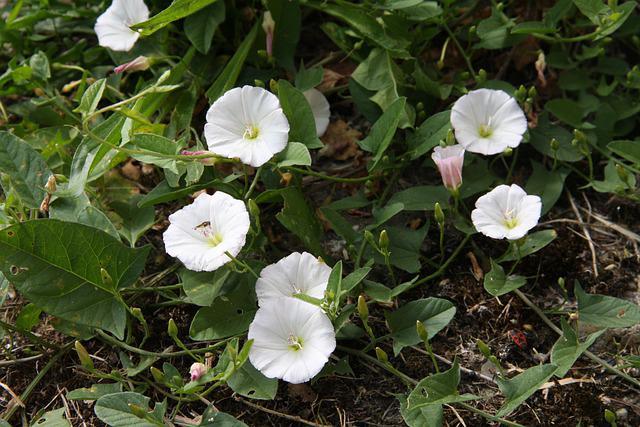
Bindweed has a deep root system, reaching 20 to 30 feet deep.
If you know someone who has dealt with bindweed, they can tell you how frustrating and infuriating these weeds can be. Bindweed can be seen vining along the surface of lawns and gardens. It often also makes its way up your favorite plants or lawn fences and hedges by winding all around them, which no one likes.
Bindweed is not a weed that you can control using your hands. Therefore, chemical control methods are often the only choice. Herbicides containing 2, 4-D, MCPP and dicamba have proven to be very effective in controlling bindweed.
Bindweed Quick Facts & Identification
| Scientific Name | Convolvulus arvensis |
| Other Names | Morning glory |
| Weed Type | Broadleaf Annual or Perennial |
| Height | 0.4 to 2 inches |
| Identification | Leaves – Bindweed has heart-shaped leaves – Leaves are spirally arranged on the plant – Leaves have smooth margins and vary in length from 2-5 cm Flowers – Flowers are white, pink and purple – Flowers are trumpet-shaped – Fully-opened flowers are 2.0 to 2.5 cm across |
Crabgrass
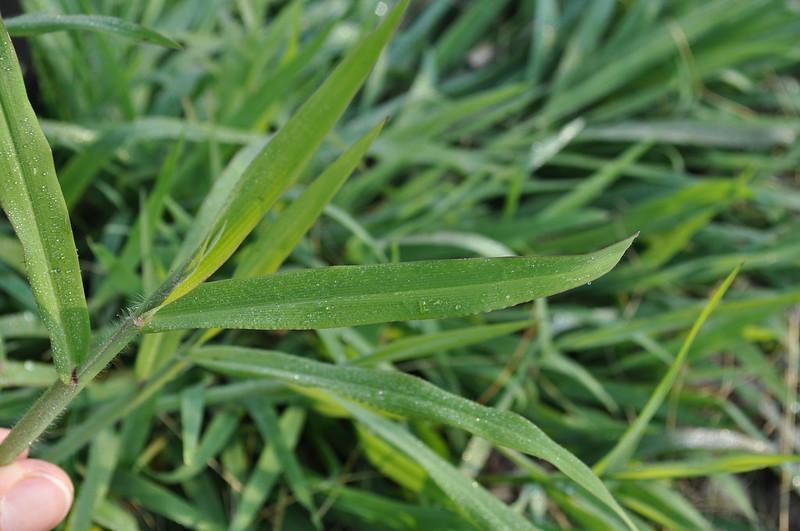
Smooth crabgrass: A summer annual grassy weed.
Crabgrass is one of the most troublesome weeds on home lawns, gardens and other turf areas. It has a prolific branching or tillering habit. It reproduces by seeds which are produced in colossal numbers by the grass.
At the start of infestation, when the plants are young and have not set seeds, you can easily control their spread by mulching, hoeing, and hand pulling. However, actively growing crabgrass needs to be controlled with post-emergence herbicides.
You can also use pre-emergent herbicides to avoid getting a crabgrass infestation.
Crabgrass Quick Facts & Identification
| Scientific Name | Genus Digitaria |
| Other Names | Finger grass, Fonio |
| Weed Type | Grassy Annual |
| Height | About 6 inches |
| Identification | Leaves – Crabgrass leaves are broad and flat – Leaves are usually lime green in color – Leaves are hairy and have a prominent mid-rib on both sides Flowers – The inflorescence of crabgrass is cluster-like – Flowers bloom in fall and summer – A single flower raceme can be up to 8 inches long |
RELATED: Common Types of Sticker Weeds (and How To Get Rid Of The Sticker Weeds)
White Clover
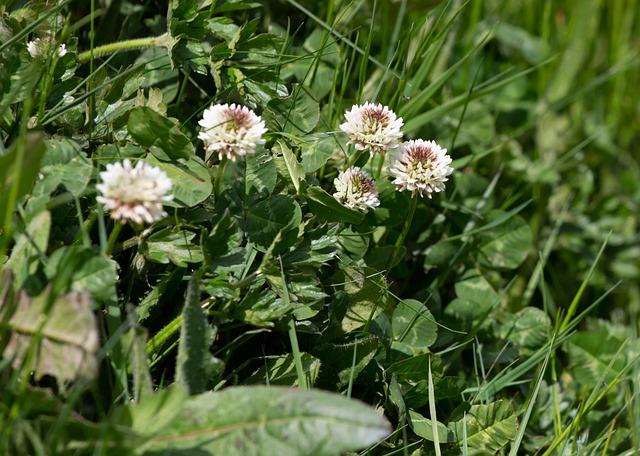
Herbicides containing fluroxypyr, triclopyr or quinclorac provide the best control against white clovers.
White clover is a low-growing, creeping weed with a very vigorous growth habit. It often grows in patches alongside roads and in lawns and pastures. These weeds especially grow in such yards where competition from the grass is low. Therefore, the best control against a white clover infestation is to maintain a healthy and thick lawn.
However, large infestations or large patches of white clover are hard to get rid of and need a chemical control. The best time to apply herbicide treatment for white clover control is early fall.
White Clover Quick Facts & Identification
| Scientific Name | Trifolium repens |
| Other Names | Dutch clover, Ladino clover, Ladino |
| Weed Type | Broadleaf Perennial |
| Height | 6 to 12 inches |
| Identification | Leaves – Leaves are alternate, stalkless and compound – Each leaf has three egg-shaped leaflets – Leaves also have a distinctive V-shaped, white mark Flowers – Flowers on white clover appear in early summer – Flowers are white and pinkish and form globular heads – Each head contains around 85 individual flowers |
Nutsedge
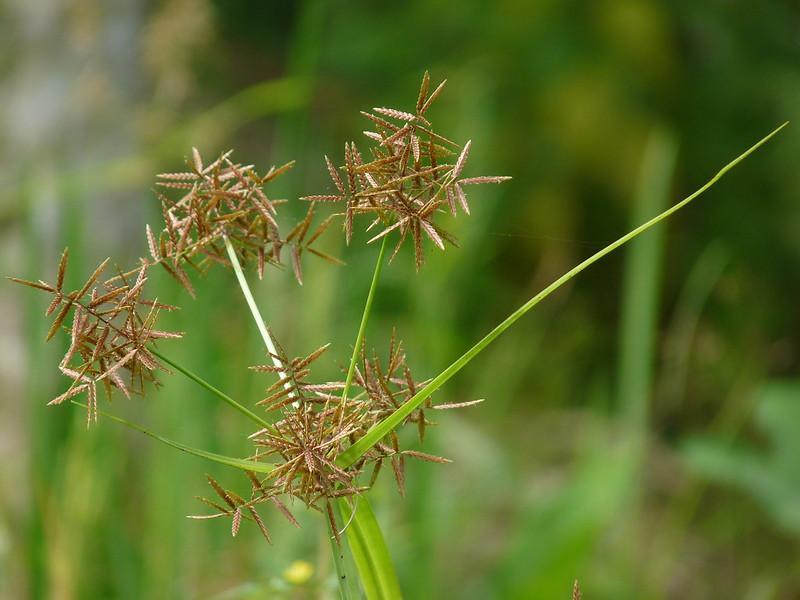
Nutsedge is a grass weed that often takes hold of poorly drained or wet lawns.
Nutsedge is a highly aggressive and persistent weed of home lawns, flower beds, and vegetable gardens. Nutsedge weeds are tough to eradicate; they reproduce in many ways and come back year after year, complicating their control.
Getting rid of nutsedges is usually a time taking process. Successful control involves both cultural and chemical control methods. Herbicides that contain Bentazon, Imazaquin, Halosulfuron and Sulfentrazone as active ingredients typically provide the best results.
Nutsedge Quick Facts & Identification
| Scientific Name | Cyperus rotundus |
| Other Names | Coco grass, Java grass, Nutgrass |
| Weed Type | Grass-like Perennial |
| Height | 3 feet (0.9 m) |
| Identification | Leaves – Leaves of nutsedge are light green in color – Leaves are thicker and stiffer and are arranged in groups of three at the base – Nutsedge leaves appear creased and have prominent midveins Flowers – Flowers appear in the form of yellow to light brown bundles – Nutsedge plants flower from July through September – Flowers appear on triangular stems |
Common Purslane

Common purslane is a natural weed of lawns and field crops.
It is a succulent summer weed with rubbery-looking stems and very fleshy leaves. It is a common weed of row crops throughout the world. It is tough to control weed, and like a zombie, it keeps coming despite all your efforts to kill it. The best way to prevent its spread is by eliminating the plants before they have set seeds.
Other cultural control methods include growing a healthy and thick lawn. Herbicides can also be used, but common purslane is best controlled by cultural practices when plants are young.
Common Purslane Quick Facts & Identification
| Scientific Name | Portulaca oleracea |
| Other Names | Little hogweed, Pursley |
| Weed Type | Broadleaf Annual |
| Height | 40 cm (16 in) |
| Identification | Leaves – Leaves are fleshy and oval in shape – Leaves are stalkless, shiny and 1/2 to 2 inches in length – The leaves are green and have a red margin Flowers – Common purslane flowers whenever there is enough moisture – Flowers are yellow and roughly ¼ – ½ inch wide – Flowers consist of five notched petals and yellow stamens |
Wild Violet
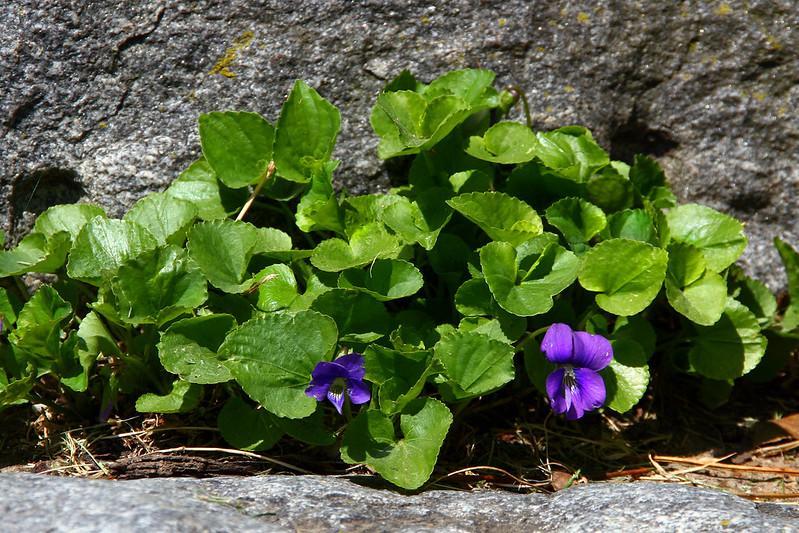
One of the most difficult to control perennial broadleaf weeds.
Wild violet is a clumpy weed found in many regions across the northern United States. They might look delightful, but they are very aggressive weeds that invade lawns that are left unchecked. In fact, wild violet is one of the most difficult to control turfgrass weeds.
You can spread mulch over your lawn to prevent wild violet growth in the yard. If you see wild violet on your lawn, hand-pulling the weed can also help. However, larger infestations require the use of herbicides which produce the best results when used in spring or fall.
Wild Violet Quick Facts & Identification
| Scientific Name | Viola sororia |
| Other Names | Common blue violet, Common meadow violet, Woolly blue-violet, Wood violet |
| Weed Type | Broadleaf Perennial |
| Height | 2 to 12 inches |
| Identification | Leaves – Wild Violet leaves are alternate and palmate – Leaves do not have hair; however, leaf edges are serrated – Leaves are high in mucilage Flowers – Wild violet has purple/blue flowers – Flowers emerge in early spring – Each flower has five petals in a star shape |
Smartweed
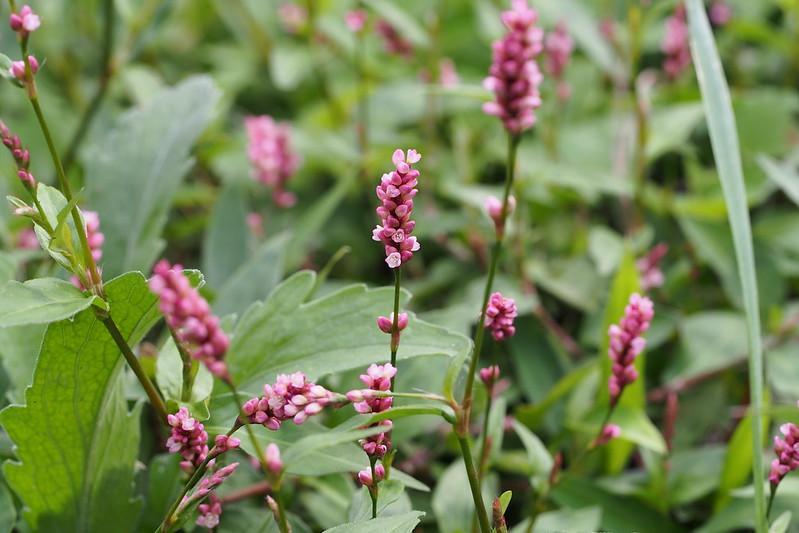
Smartweed is a herb that is used widely in herbal medicines.
Smartweeds are low-growing, somewhat competitive weeds that are consumed extensively by ducks, small birds, and small mammals. Smartweed grows best in wet or soggy muddy soils with full sun.
It is tough to control smartweed with physical methods. The weed grows back from seeds and remaining roots in the soil. Therefore, herbicides provide the best control against smartweed when appropriately used.
Herbicides containing 2,4-D and metsulfuron provide the best control against smartweed.
Smartweed Quick Facts & Identification
| Scientific Name | Genus Polygonum |
| Other Names | Knotweed, Knotgrass |
| Weed Type | Broadleaf Annual |
| Height | 30 to 120 cm |
| Identification | Leaves – Smartweed has simple, lance-shaped leaves – Leaves often have dark molting on them – Leaves taper at the tip Flowers – Flowers are missing petals and have sepals that mimic petals – Smartweed flowers from June to November – Flowers are pink or white, though some can be white |
Pigweed
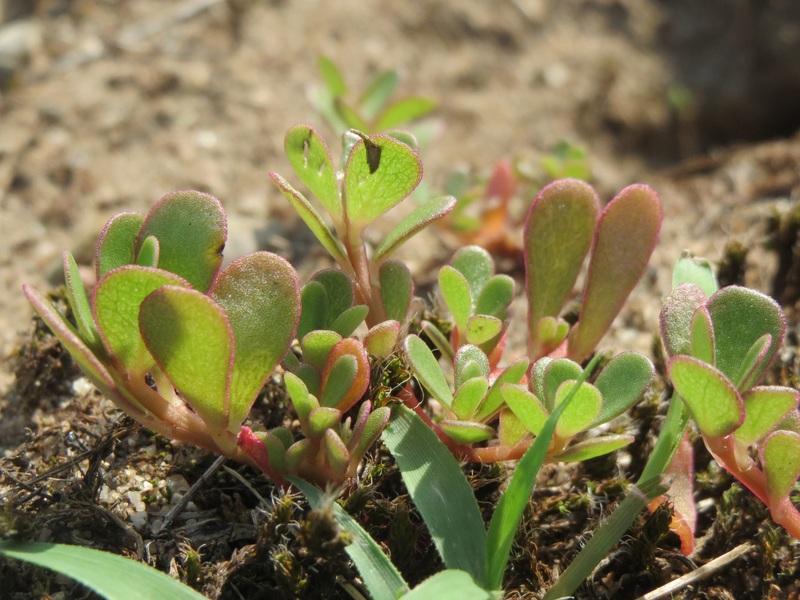
Pigweeds are erect-to-bushy plants with oval- to diamond-shaped leaves and a dense inflorescence.
Pigweed is not a single weed but a group of pest plants that have become a significant problem in row crops and vegetable gardens throughout the world, including the United States. Pigweed is a shrubby plant and can be highly branched.
Experts suggest using pre-emergent herbicides for controlling pigweeds. Herbicides that have trifluralin as an active ingredient produce the best results. Mulching the lawn is also very effective in preventing pigweeds from growing.
Pigweed Quick Facts & Identification
| Scientific Name | Genus Amaranthus |
| Other Names | Amaranth |
| Weed Type | Broadleaf Annual |
| Height | 2 to 7 feet |
| Identification | Leaves – Pigweed leaves are waxy in appearance – Leaves are narrow at the base and are diamond to egg or oval-shaped – Leaves are smooth and hairless Flowers – Flowers are produced in dense clusters – Flowers are green and produced in the form of spikes – Pigweed usually flowers during early summer |
Pokeweed
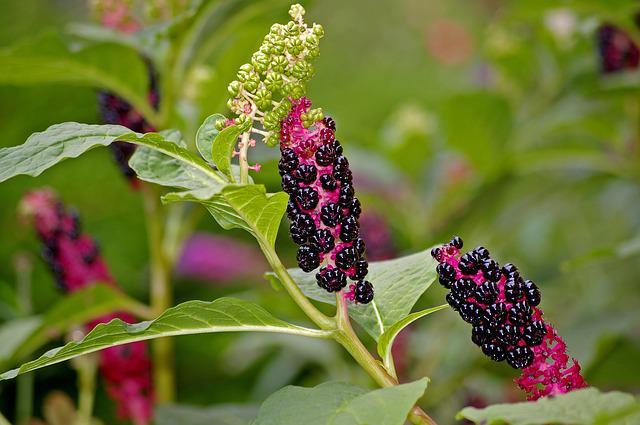
Pokeweed berries are incredibly messy and can cause irritation on the touch.
Pokeweed is a typical urban and landscape weed with a poisonous root resembling that of horseradish. It often outcompetes local vegetation, and its berries are incredibly messy and hazardous. In addition, pokeweed spreads via seed, and it often spreads very quickly in areas with high bird activity.
Pulling the weed is not a suitable control method as pokeweed has deep roots which can regrow into new plants. Chemical herbicides containing 2,4-D and glyphosate provide the best results when used on young plants.
Pokeweed Quick Facts & Identification
| Scientific Name | Phytolacca americana |
| Other Names | Inkberry, Poke sallet, Dragon berries |
| Weed Type | Broadleaf Perennial |
| Height | 6 to 10 feet |
| Identification | Leaves – Pokeweed has simple leaves on purplish stems – Leaves are incredibly smelly and bright green – Leaves are ovaloid and toothless Flowers – The inflorescence is in the form of pinkish racemes – Flowers are white, pinkish or greenish – Pokeweed flowers in mid-summer |
RELATED: Overseeding A Lawn With Weeds: A Simple And Easy Guide
Poison Ivy
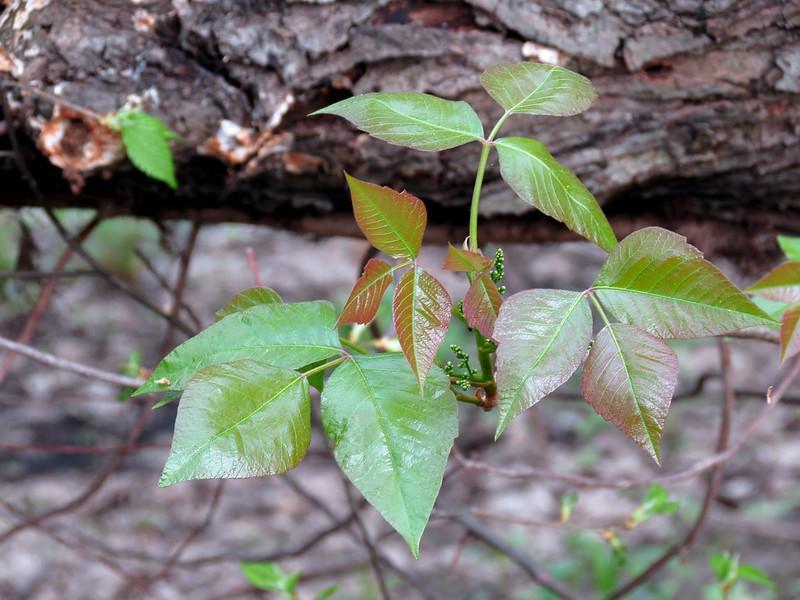
Poison ivy is a noxious weed that can cause a severe rash on the touch.
Poison ivy is a noxious weed that is native to Minnesota. It can be very tricky to identify. Poison ivy exhibits an array of leaf shapes, colors and growth habits. It can creep near the surface of the soil, exist as a shrub and climb like a woody vine.
Physical control methods usually do not result in any satisfactory results. Therefore, chemical control is the only good defense against poison ivy. However, even herbicides have to be applied several times before poison ivy can be eradicated entirely.
Herbicides that contain dicamba, mecoprop and 2,4-D amine often produce the best results against poison ivy.
Poison Ivy Quick Facts & Identification
| Scientific Name | Toxicodendron radicans |
| Other Names | – |
| Weed Type | Broadleaf Perennial |
| Height | Shrub: 1 to 2 feet, Climbing: 3 to 12 feet |
| Identification | Leaves – Poison ivy plants have compound leaves with three leaflets – New leaves appear sort of reddish Flowers – Flowers are unremarkable and off-white in color – Poison ivy flowers in the spring |
Black Nightshade
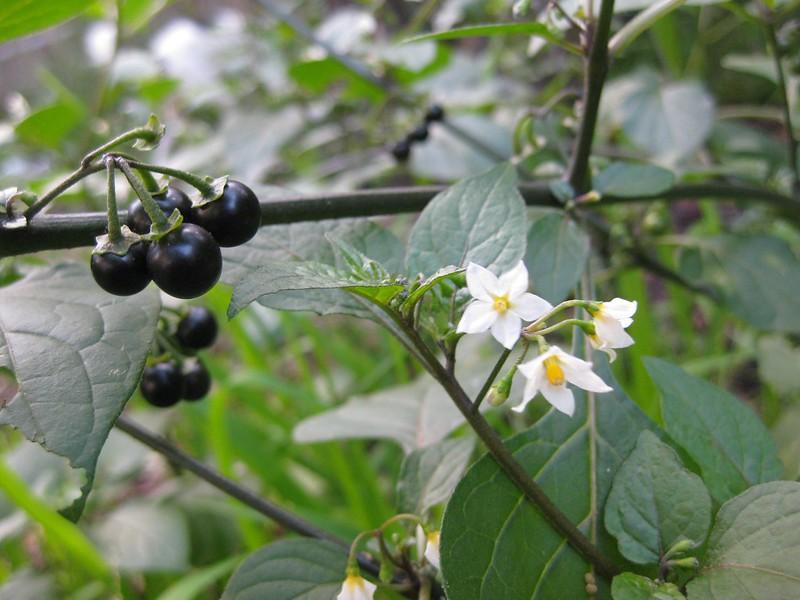
A common weed of lawns and gardens with rich soil in the sun or shade.
Black nightshade weed is often confused with deadly nightshade, a much more harmful and poisonous weed. However, black nightshade is still a toxic plant, especially its unripe green-colored berries. Black nightshade is a common weed of many agronomic crops.
Its spread can be reduced by mowing the grass properly or by swathing to prevent seed production. Black nightshade is resistant to many commonly used herbicides. However, herbicides containing Imazamox, Carfentrazone and Metolachlor produce satisfactory results.
Black Nightshade Quick Facts & Identification
| Scientific Name | Solanum nigrum |
| Other Names | Blackberry nightshade |
| Weed Type | Broadleaf Annual |
| Height | 20–80 cm (8–32 in.) |
| Identification | Leaves – Leaves are oval and have smooth or wavy edges – Leaves are alternate and slightly hairy Flowers – Black nightshade flowers from July to September – Flowers are white to purple and star-shaped – Each flower has five petals fused at the base |
Henbit Deadnettle

A weed in the mint family that appears in early spring.
Its tiny pink pretty flowers will try to fool you into thinking that henbit deadnettle is an ornamental plant; however, it is a weed for most situations and most people. The weed gets its name because of the chickens that love munching on it.
Despite all of its cuteness, henbit deadnettle, once on your lawn, can be very difficult to eliminate. That is why most experts suggest using pre-emergent herbicides to prevent its growth. There are also various post-emergence options as well.
Henbit Deadnettle Quick Facts & Identification
| Scientific Name | Lamium amplexicaule |
| Other Names | Greater henbit, Common henbit |
| Weed Type | Broadleaf Annual |
| Height | 16 to 18 inches |
| Identification | Leaves – Leaves are 2 to 3 cm in size and have lobed margins – Leave blades are hairy, kidney-shaped and have toothed edges Flowers – Flowers are large and appear early in spring – Flowers are whitish purple and are produced in axillary whorls |
Chickweed
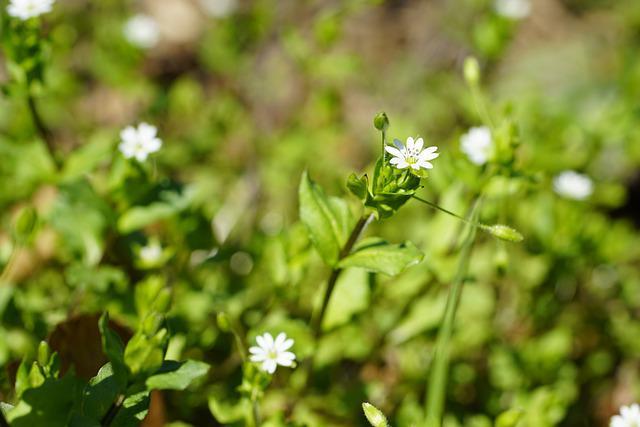
Chickweed creates lush green dense mats with small white flowers on the ground.
Common chickweed is a significant problem in nutrient-rich soils, especially soils that are rich in nitrogen. Moreover, it frequently invades lawns and places that are well-watered; however, it can also survive drier conditions. It is also used as an indicator of soil fertility.
The best way to get rid of chickweed is to pull out the plant by hand as much as possible. If you want to apply a pre-emergent herbicide, do it in September. Effective post-emergent herbicides against chickweed include 2,4D+MCPP+dicamba and 2,4D+MCPP.
Chickweed Quick Facts & Identification
| Scientific Name | Stellaria media |
| Other Names | Winterweed, Maruns, Craches, Chickenwort |
| Weed Type | Broadleaf Annual |
| Height | 4 to 6 inches |
| Identification | Leaves – Chickweed leaves are covered in dense hair and somewhat sticky – Leaves are larger towards the tip of stemsLeaves are broadly egg-shaped Flowers – The flowers are white and have five double-lobed white petals – Flowers are 1/8 to 1/4 inch in diameter – Flowers are most noticeable in spring and autumn |
Musk Thistle
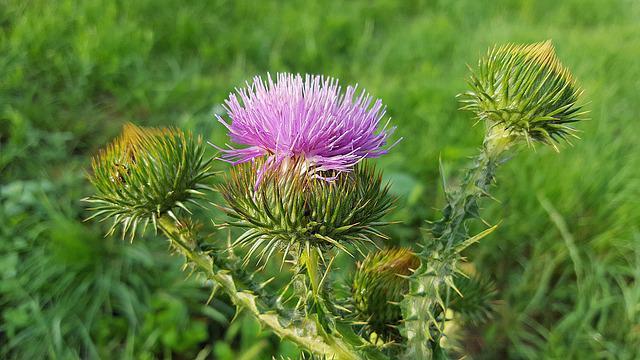
Musk weed is a designated noxious and invasive weed in many regions of the United States.
Musk thistle is a very aggressive noxious weed of rangeland, roadsides, non-crop areas and pastures. It creates dense monocultures and chokes out local vegetation. Livestock animals tend to avoid pastures that are heavily infested with musk thistle plants.
The key to preventing musk thistle infestation is to avoid its seed dispersal. In addition, the establishment of aggressive grasses in the given area is also a good control strategy. You can use chemical herbicides as a last resort, but it will take several applications before complete removal.
Musk Thistle Quick Facts & Identification
| Scientific name | Carduus nutans |
| Other names | Nodding thistle |
| Weed type | Broadleaf Biennial |
| Height | 1½ to 6 feet |
| Identification | Leaves – Leaves are deeply-lobed, sparsely hairy and have grayish margins – Leaves are around 10 inches long and lanceolate in outline Flowers – The flowers are pink and very showy – Flowers grow in clusters making disk-shaped flower heads – Flowering usually occurs in May |
Yellow Salsify
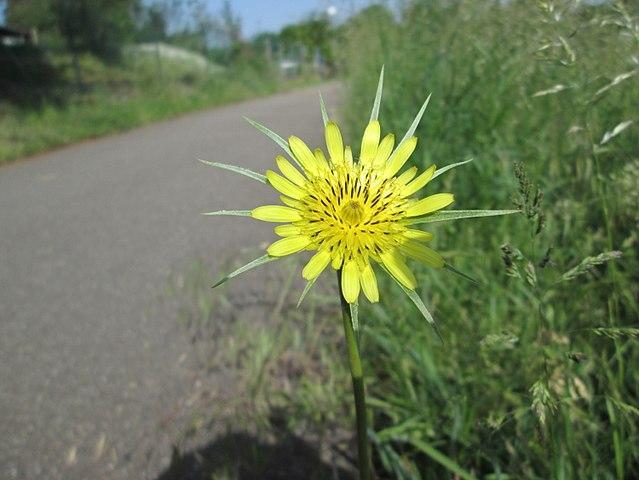
A weed of sunny landscape and garden areas.
It is a common weed in waste areas and cultivated crops. Many parts of yellow salsify, including its taproot, are edible and consumed by foraging animals. It is considered an invasive weed in many states of the United States.
Weed control in the case of yellow salsify is relatively easy. It only spreads by seed, so you can control its spread if you remove the flowers by mowing or shearing before the plant has set seeds. However, pre- and post-emergent herbicides can be used if it is not feasible.
Yellow Salsify Quick Facts & Identification
| Scientific name | Tragopogon dubius |
| Other names | Western salsify, Yellow goat’s beard, Wild oyster plant |
| Weed type | Broadleaf Biennial or Short-lived Perennial |
| Height | 12 to 39 inches |
| Identification | Leaves – Leaves are alternate and narrow, tapered from base to tip – Young leaves are hairy, while mature leaves are waxy Flowers – Flowering takes place from April through July – Flowers are pale yellow and around 2 inches in size – Each flower consists of numerous ray florets |
Creeping Charlie
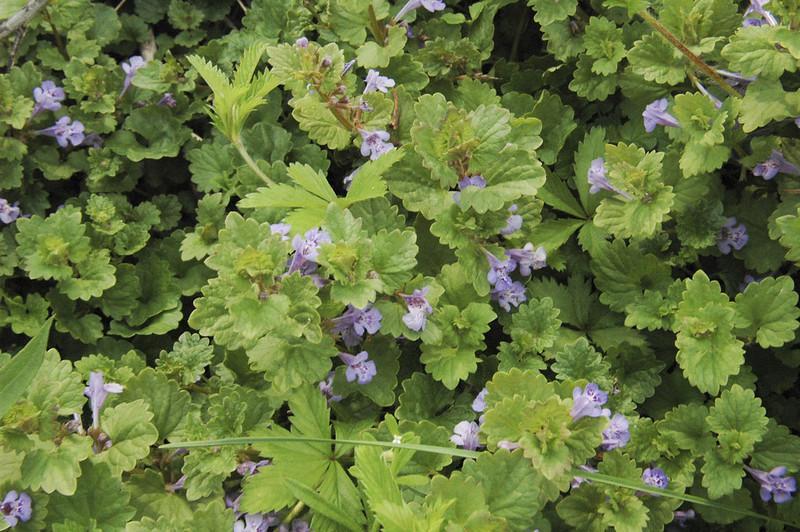
An insidious weed that is both resilient and adaptable.
Creeping charlie is an herbaceous plant that survives in shady, moist spots like under shrubs and trees. It often invades lawns that are poorly managed or otherwise neglected. It spreads via both seeds and runners and can quickly take over the entire yard.
Putting proper lawn care and management plan is usually the best way to prevent and control creeping charlie infestation. However, if you need to use chemical herbicides, herbicides containing salts of dicamba or triclopyr produce the best results.
Creeping Charlie Quick Facts & Identification
| Scientific name | Glechoma hederacea |
| Other names | Creeping Jenny, Catsfoot, Field balm |
| Weed type | Broadleaf Perennial |
| Height | 20 cm (8 in.) |
| Identification | Leaves – Leaves are shiny and round or kidney-shaped – Leaves have scalloped margins and may appear tinted purple Flowers – Flowers are small and bluish-purple – Flowers are funnel-shaped and appear in spring |
Frequently Asked Questions (FAQs)
How can you tell the difference between a plant and a weed?
Any plant that is growing in a place where it is not supposed to become weeds. So, the list of weeds will vary from place to place. Simply put, the difference between a weed and a plant is subjective and lies in the eye of the beholder.
What is the most effective weed killer for lawns?
Growing and maintaining a healthy lawn is the best “weed killer.” A healthy and thick lawn in itself is an excellent defense against weeds. However, if it does not work out, you will have to use chemical weed killers. In our experience, Southern Ag Amine 2,4-D Weed Killer and Roundup Concentrate Extended Control are the best weed killers to use on lawns.
Is a daisy a weed or a flower?
Once again, it is subjective. It is a weed if a daisy is growing in the middle of a turf or in any other place where it is not wanted. However, if it is being grown in flower beds or an English cottage garden, it is a flower.
Is it better to spray weeds before mowing?
If you want, you can spray weeds on your lawn after mowing. However, it is better to spray the weeds with a herbicide before mowing. It is because mowing will shed the weeds on your yard, which will make the herbicide less effective. Also, it is much harder to pull weeds that are short and mowed low.
What weed looks like a daisy?
There are many weeds that look like daisies. Common examples include Chickweed, Daisy Fleabane, Aster, Chamomile and Capeweed.
What kind of weed has thorns?
Weeds that have thorns or spines are commonly known as Spiny or Spiky Weeds. There are many weeds that have thorns or spines, such as Canada thistle, Musk thistle, Jimson weed, Spiny pigweed and lawn burweed.
How often can you put weed killer on your lawn?
Generally, you are supposed only to put a weed killer on your lawn once or twice a year. However, in case of a severe infestation, multiple applications of the weed killer might be needed. Therefore, always consult an expert or read product instructions before herbicide use.
Sources for Further Reading
- Weed Identification & Management. Retrieved 29 May 2022, from Weed Identification Tool. University of Wisconsin
- The UC IPM Weed Photo Gallery. Retrieved 29 May 2022, from Agriculture and Natural Resources, University of California
- How to Identify Weeds | Cornell Weed Identification. Retrieved 29 May 2022, from Cornell University
Hope you like our lawn weed identification guide. If you have some tips to add, comment below. Also, check out these yard maintenance tips:
How Many Square Feet Are In A Pallet Of Sod | How Big Is A Pallet Of Sod?
Common Lawn Weeds With Yellow Flowers (And How To Get Rid Of Them?)
Top 10 Weeds With Purple Flowers (And How To Get Rid Of Them?)







